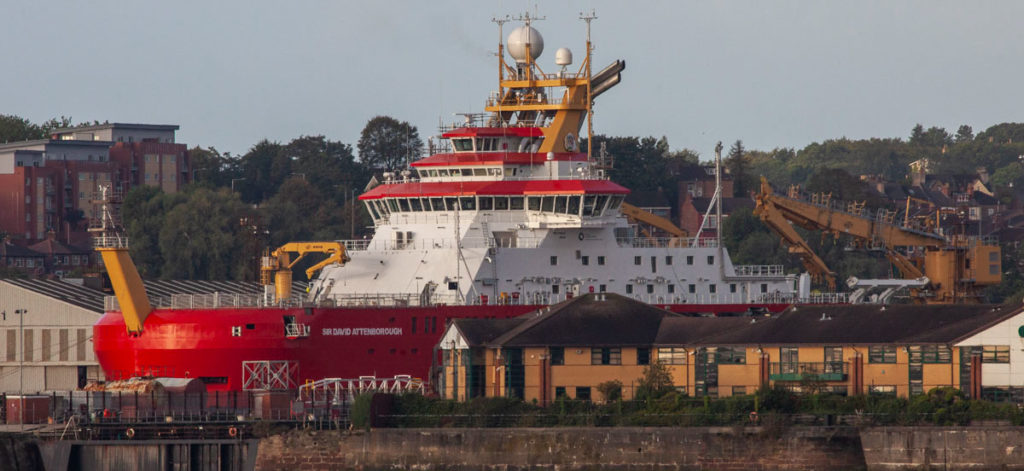Public consultations don’t always go as planned and four years ago the news was full of stories about the proposed name for a new ship – Boaty McBoatface – now called the RRS Sir David Attenborough.
This was the name chosen in an online survey to help to decide what to call a new polar research vessel. A radio presenter had jokingly made this suggestion and, thanks to social media, the idea quickly took hold, making it the winner.
However, the vessel was eventually named after Sir David Attenborough, which was another of the top five suggestions. Construction began in 2016 and Sir David took part in the naming ceremony last year with the Duke and Duchess of Cambridge.
This month the ship was back in the news for a different reason, when it visited Liverpool Cruise Terminal, having made the short journey across the Mersey from the Cammell Laird shipyard, where it was built.
It is a technological marvel and this post gives a few highlights.
RRS Sir David Attenborough
The vessel is designed for research in polar regions and is one of the largest and most technically advanced civilian ships to be built in the UK in recent decades.
At 129 metres long, it can accommodate up to 60 scientists and support staff along with about 30 crew, on trips of up to 60 days at a time. The economical cruise speed is 13 knots and the hull and engines are designed both to minimize fuel consumption and underwater noise that could affect wildlife and instruments.
It is capable of making the return trip to the Antarctic and back from the UK and breaking through ice up to a metre thick at a respectable walking pace (3 knots). It will also operate in the Arctic.
(credit: Patrick Kelley)
Scientific equipment
The equipment carried includes robotic samplers, marine gliders, and remotely operated submersible vessels. The instrumentation available includes ocean, atmospheric, biological and geological sensors.
Onboard laboratory and computer facilities will allow samples and data to be analysed soon after collection and, in a novel step forwards, portable containerised labs can be added for individual trips. Rock drills will allow samples to be taken from the sea bed.
There is hangar space for two helicopters to transport scientists and equipment and a shaft about 4 metres across – called a moon pool – runs vertically through the ship to help with deploying and recovering equipment.
Boaty McBoatface
Fans of the Boaty McBoatface name will also be glad to hear that this lives on, having been given to one of the underwater craft.
This has already been used operationally in Antarctica from another ship, travelling more than a hundred miles underwater and reaching depths of more than two miles while making observations of ocean temperatures, salinity and currents.
It is also equipped with instruments to measure the abundance of krill – important for whale populations – and the thickness of sea ice.
Next steps
Following the Liverpool visit, the RRS Sir David Attenborough is now in Birkenhead for the final stages of outfitting. It will then will undergo scientific and engineering sea trials before being handed over to the British Antarctic Survey for its first operational trip. For more information on its progress, there are blogs and news feeds on the Survey’s website.
If you are interested to learn more about the maritime history of the Mersey Estuary, the Mersey page on this site has links to more articles on this theme as does my newsletter, for which sign up details are below.
Image credit: Patrick Kelley, Creative Commons 2.0

